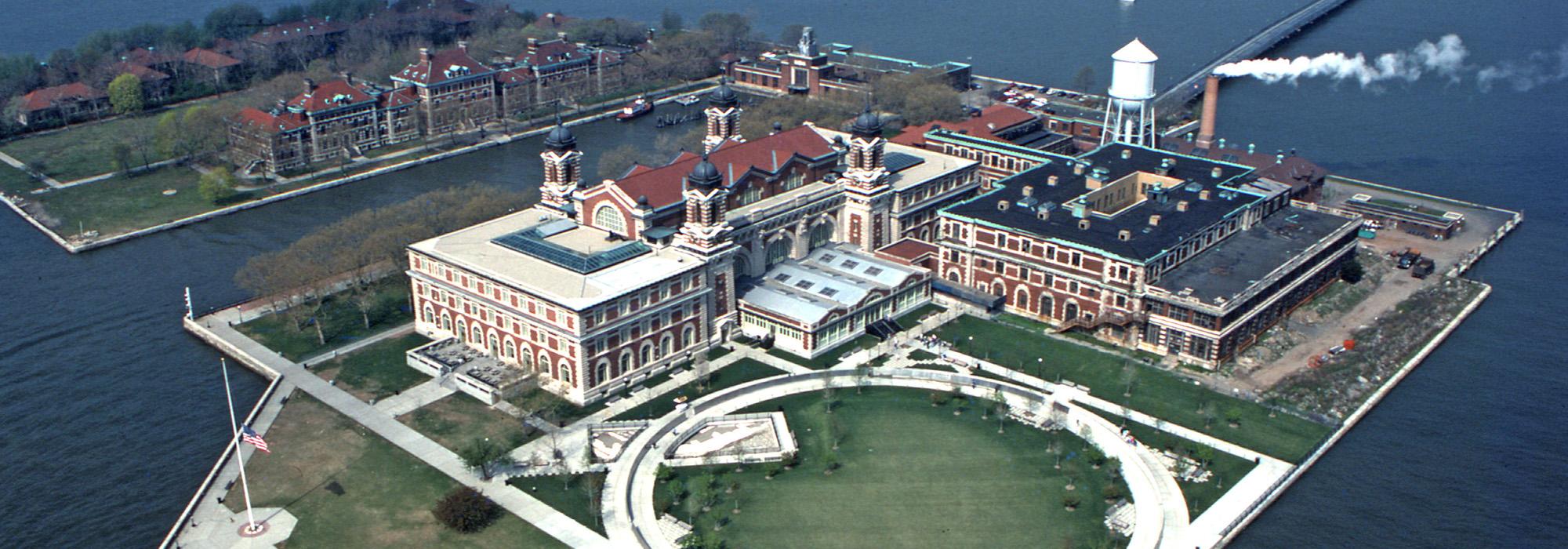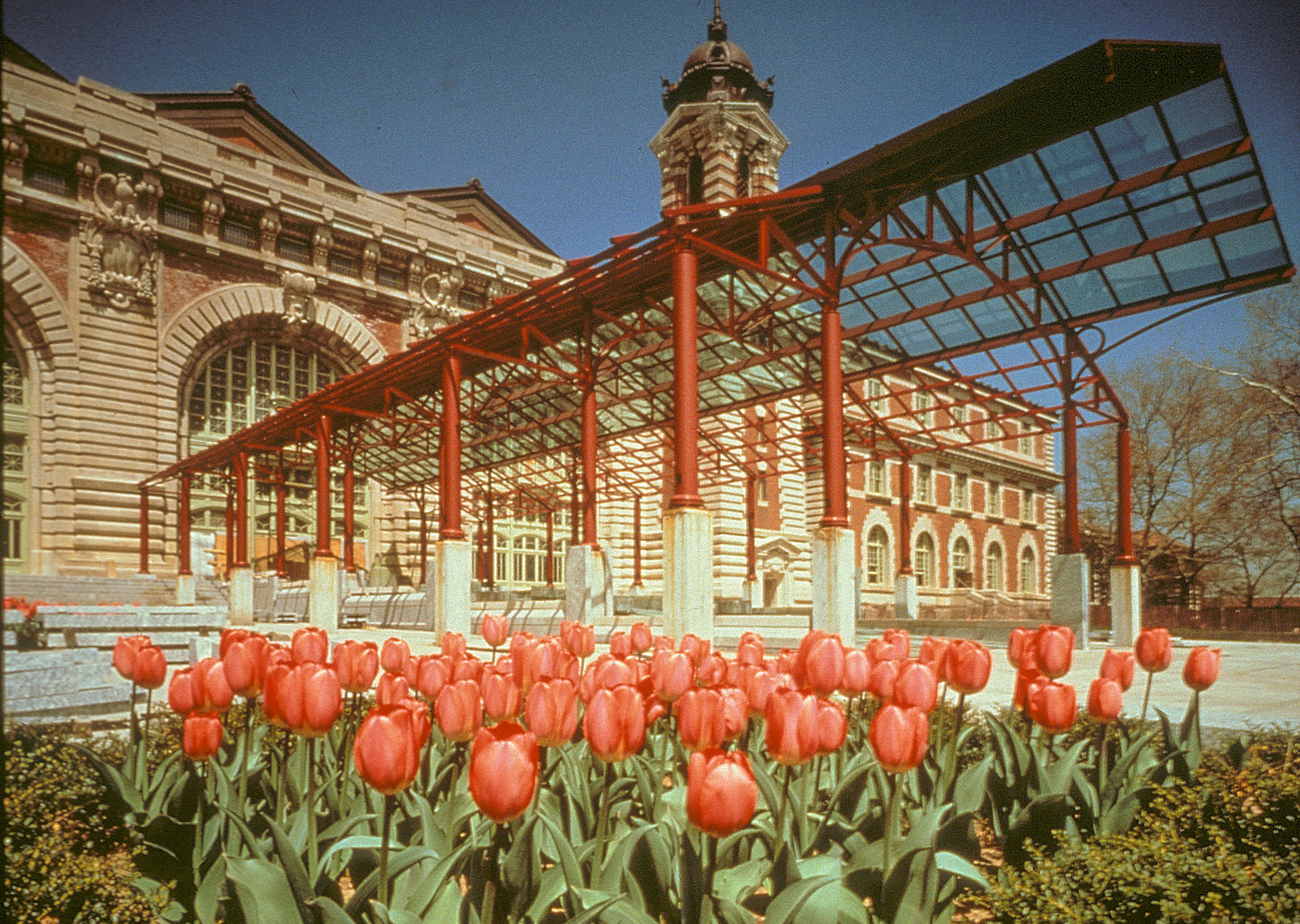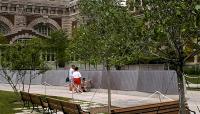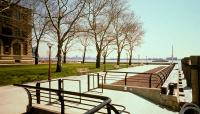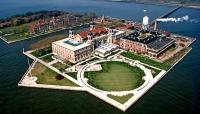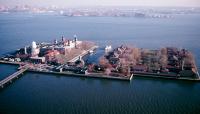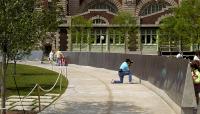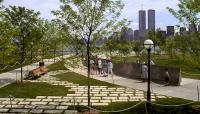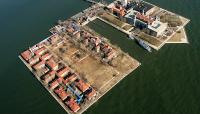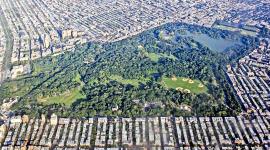Landscape Information
In New York Harbor’s Upper Bay, Ellis Island is best known as the site where millions of immigrants entered the United States. The island was increased from 1.5 to its current 27.5 acres via a series of landfill operations between 1830 and 1935, dividing the landscape into three distinct parcels called Islands One, Two, and Three in a “horseshoe” plan. The first immigration facilities were constructed in 1892, and then reconstructed in 1897 by the New York architectural firm of Boring and Tilton after a fire. Their master plan called for a second manmade island to house a hospital, and included landscape improvements which were not implemented. In 1902 William Williams was appointed Commissioner of Immigration for the Port of New York, and during this time the island’s landscape was greatly enhanced, likely with Boring and Tilton’s design as reference, adding turf grass, privet hedges, concrete sidewalks, benches, flowerbeds, a roof garden for detainee recreation, and soon after, a greenhouse. Following World War I, the buildings and landscape fell into disuse and deteriorated. In 1939 an effort was made to revitalize the island with a planting plan by the office of the Supervising Architect in the Federal Works Agency, but by the time the immigration facilities closed in 1954, the landscape was overgrown and unrecognizable.
In the early 1980s Beyer Blinder Belle in collaboration with Notter, Feingold & Alexander created a Concept Master plan for the entire island, and subsequently a Development Concept Plan. Laurie Olin of Hanna/Olin was brought on as a subconsultant for landscape architecture and site planning. The rehabilitation of Ellis Island began in 1984, restoring formal pathways, and lining the ferry basin with historic trees. A new dock was constructed in front of the main building to receive visitors, while the commemorative Wall of Honor was constructed along the northwest edge of the island. Ellis Island became part of the Statue of Liberty National Monument in 1965, and was added to the National Register of Historic Places in 1966.



